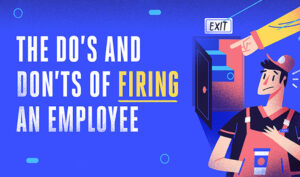
15 Things to Avoid When Letting Employees Go [Infographic]
Especially during our prolonged pandemic, and right before we begin the holiday season, firing someone is not fun. The impact on the person getting fired

Especially during our prolonged pandemic, and right before we begin the holiday season, firing someone is not fun. The impact on the person getting fired

You don’t know you need outplacement until you really need it. However, it’s never too soon to pick a provider — here’s why.

This week, #TChat offers 3 ways to play! We marry old school with new tech, and hopefully advance workplace culture and practices for everyone

Much of today’s world of work now plays out on an open, social “stage.” What are the implications for employer and employee privacy and confidentiality? Let’s talk…
Letting employees go is never easy. But sometimes it’s necessary. And when it’s necessary, you know. The TalentCulture community discussed issues surrounding the firing process. Here are suggestions to consider…